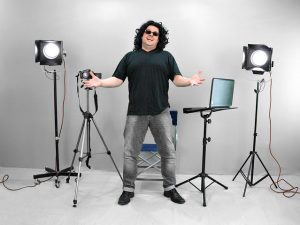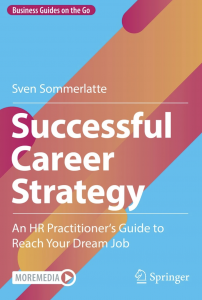Many studies have shown that people today prefer videos to text, especially among the younger generations. This is a clear trend. The incredible richness of content on YouTube is a result of this. But from what I can observe, leaders are still not always very familiar with this tool and sometimes even reluctant to stand in front of a camera. I hope that this article can help overcome some of these barriers and make your communication more efficient and more powerful. I will outline here the 4 key steps to shoot YOUR video. You will find practical advice on content creation, shooting, post-production and on the publication of your video. Get started, now!
I am frequently asked to talk about my YouTube experience: What equipment is needed? How to prepare a video? How to shoot a video? How to create and promote a channel? What does it take to do the post-production? And …. do you get professional support from a specialized agency?

The answer to this last question is simple: I do it all by myself – and it is actually easier than it may look at a fist glance. I’d be happy to share my experience here. This could be relevant for those of you who may want to publish videos on YouTube or other social media. But I believe that this article is also relevant for leaders who want to leverage on the power of videos for their internal communication on the company Intranet or on corporate social media such a Yammer.

These are the 4 steps that I would recommend to follow:
1) Content comes first!
The most important part is the content. You need a topic that can be outlined in a few simple messages. The best is to have one key idea that you want to put across. I would recommend writing it up first. This will help you ensure that the content is clear for yourself and well-structured with an introduction, a central part where your outline your main arguments and with a closing. The optimal length of a video in my experience is 3 to maximum 6 minutes.

I usually read the text of my video a couple of times before the shooting to have the key points in mind. It is important to feel passionate about the messages that you wish to deliver. I was once told by a professional YouTuber that you have to have 2 or 3 times more energy in front of a camera than you would need in a normal conversation. The camera “absorbs” energy. It therefore requires a lot of passion and conviction to be impactful in your videos.
2) Technical equipment for the shooting
What technical equipment is required? The simple answer is: Your smart-phone has all the features you need. Later you may decide to sophisticate: You may buy a tripod (but books are good as well to stabilize your camera) and you may invest into a microphone. But you phone is all you need to make a start and to gain experience.

Let me tell you a little story. When I decided to start my YouTube channel, I went into a professional camera shop. I thought I needed a top equipment to put all chances on my side. Maybe there was also the idea that I would have to go all the way if I had spent a lot of money. So I went into this shop with the idea that I would invest a couple of thousand Euros to have everything I need. The friendly lady behind the counter asked me if I have an IPhone. I said yes. And to my great surprise she advised me to try things out just with this device. How right she was! I started to gain experience. But then I came back with specific needs: a microphone (and a second one for interview videos), for a tripod, a black scree, light and then more light. And so I did become a good customer!

For the shooting, I would recommend doing this when you can isolate yourself for a couple of hours. It is important not to be disturbed. Any interruption during the shooting destroys the take. And according to Peters law, this happens usually when you are about to make your best take 😉 I would also recommend putting all devices on flight mode and on silent.
Personally I don’t use any script or prompter, because that takes away most of the spontaneity. In some cases, I use a flip chart with a couple of bullet points to remember the flow of the argumentation.
I usually do between 5 and 10 takes. The later ones are often the better ones, mainly because they are shorter. After a couple of takes you see where you can be crisper, clearer and what aspects you may be able to cut out. Short is good! I would recommend watching each take before shooting the next one. That will allow you to check what can be improved from a content perspective, but also technically in terms of light, sound and framing.
The background matters. It is worthwhile spending a bit of time to find a nice place with an attractive background. This will have an impact on your average watch-time per video. People do stay longer if they find the picture attractive, not just what you say.

Make sure you have a stable and comfortable body position and that you speak with conviction. Be present! Remember, the video is absorbing energy. It takes quite some passion to be impactful. Finally, I think it helps to talk directly to the people who are “behind the camera”. I usually think about someone who I hope will see the video and who might be particularly interested in its content.
3) Post-production
The less post-production is needed the better it is, because that can otherwise become very time consuming. I use I-Movies for the post-production. It is readily available on your I-Phone or I-Pad and quite simple to use. Alternative software is of course available as well. You will find many very helpful tutorial video on YouTube to get started. The basics are fairly simple.

I think it is helpful to watch other videos on YouTube to learn. You will see that jump-cuts and hard-cuts are used a lot. To be honest, this is not so much my cup of tea. I do exactly the contrary: I try to have the fewest cuts possible. Many of my videos are just one take from the beginning to the end. I think that makes them more fluid and easier to listen to. But this is really a question of style. I am sure that you will find out what suites you best.
4) Publication
In case you wish to publish the video on YouTube, you should create a Thumbnail, which is the icon or cover page that will be visible in the search results. It should contain the title of your video and an attractive photo. Again, you will find great tutorial videos on this and also on how to set up your YouTube channel.
Social media do a great job in getting your content to the people who are interested in it. For business related topics, Linked-In is a very powerful tool. Facebook, Twitter and Instagram are great multipliers as well.

For those who wish to establish a Channel and grow their audience, I would recommend a regular pattern for publications (weekly, bi-weekly, monthly, …). The regularity will allow you audience to know when they can expect a new video. In addition, the YouTube algorithm will promote your videos more if the robots can identify a publication pattern.
I guess that this is all you need to know to get started. So have fun! You will be amazed by the positive feedback you will receive and by the number of people who will see your content. Video communication is very direct and engaging. It is clearly the communication channel of the future. Jump into it and use the comment section to let me know about your experience!
More information in my book:
Sven Sommerlatte : Successful Career Strategy – An HR Practitioner’s Guide to Reach Your Dream Job (Springer, June 2023). ISBN: 978-3-662-66790-3
